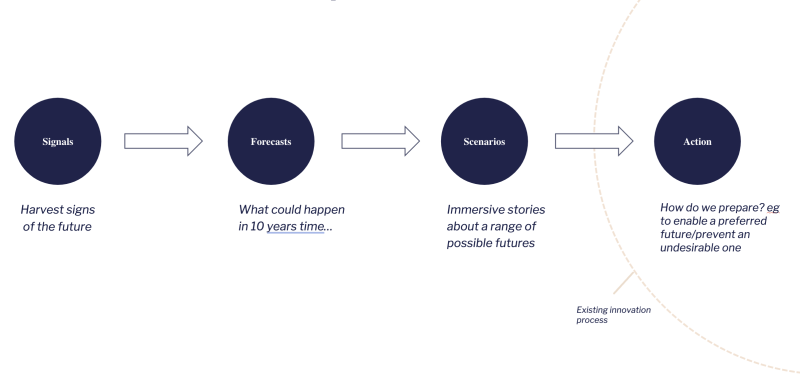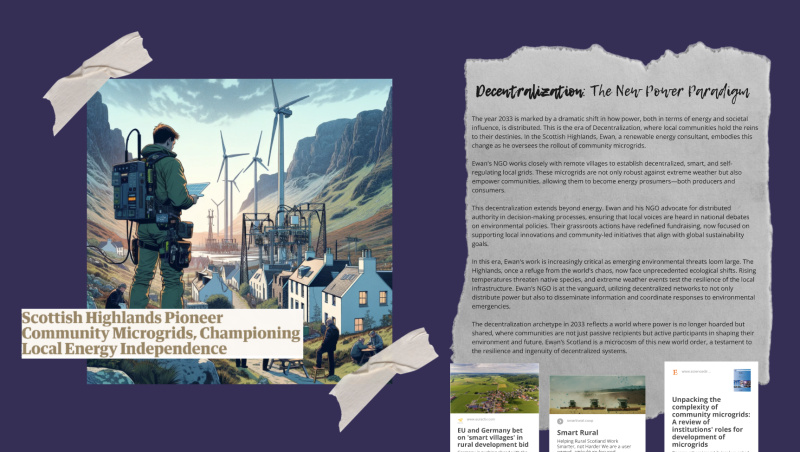Christian Graham05 Oct 2024
As environmental challenges intensify, we can’t just react to problems as they arise. Friends of the Earth is committed to helping create a more sustainable world but to achieve lasting change we have to be able to imagine a better future.
What is futures thinking?
Futures thinking is a strategic approach that helps organisations and communities explore multiple possible futures beyond the immediate horizon. It involves imagining optimistic and challenging scenarios based on current trends and emerging signals. By engaging with these potential futures, we can better anticipate disruptions, uncover new opportunities and shape flexible and resilient strategies. In turn this helps us identify new approaches and experiments to tackle the problems of climate breakdown and the biodiversity crisis.
Unlike traditional forecasting, futures thinking embraces uncertainty and complexity, encouraging creative and adaptive responses. It taps into the power of collective imagination, bringing together diverse perspectives to envision not just what might happen but what we want to happen. By involving communities, experts and stakeholders, we can co-create future scenarios that reflect shared values and goals, ensuring inclusive and just strategies grounded in real-world needs. Here are three reasons why we use futures thinking:
- Tackling complex environmental challenges
Futures thinking helps address the interconnected and evolving nature of environmental issues. - Proactive rather than reactive
Enables us to plan for a range of possible scenarios to avoid being caught off-guard by emerging crises. - Driving innovation and social change
Helps identify innovative solutions, inspire community action, and influence policy.
How Friends of the Earth uses futures thinking
Outside of horizon scanning, our first major use was at the outset of the covid pandemic. We partnered with the Local Trust who generously gave us access to their scenarios and used them to identify and address vulnerabilities in our theory of change. This led to a re-allocation of resources towards community engagement and empowerment during our next strategic review.
Since then we have used futures and collective imagination tools to process signals, produce and explore scenarios during our labs and research into topics like digital civic infrastructure while building sector understanding of futures through the Innovation for Impact Network.
There are many ways to future, but our primary approach is based on the Institute of the Future’s framework.
The future of futures thinking at Friends of the Earth
Friends of the Earth is increasingly using AI to help identify topics to focus on, process signals and create a range of scenarios to explore. This isn’t about letting AI take over the process, but to augment our own thinking and support our decision-making as well as enabling us to more effectively respond to the challenges of tomorrow.
You can read a selection of how-to articles written by our co-lead, Christian Graham, on his Medium blog:
- Using ChatGPT for foresight: Futures wheel
- Using ChatGPT for foresight: Scenario development
- Using ChatGPT for foresight: Signal processing
See also our draft Human+ technology manifesto for a description of how we orientate ourselves towards disruptive technologies like AI.
Want to have a go at futures yourself? We can highly recommend this introductory course or get in touch with us for a chat.




